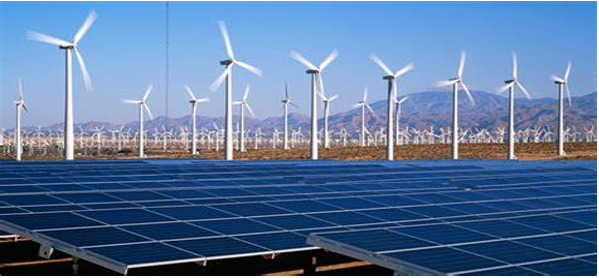INP-WealthPk
Amir Saeed
Currency risk poses a significant barrier to investment in the country’s renewable energy sector, necessitating innovative financial strategies to attract capital and ensure project viability.

Talking to WealthPK, Afia Malik, an energy expert at Pakistan Institute of Development Economics (PIDE), highlighted that currency exchange rate risks are a significant barrier to large-scale investment in renewable energy projects in Pakistan. “In the power sector, revenues are typically generated in local currency, while project financing costs are often denominated in US dollars. This discrepancy poses a substantial risk; a depreciation of the Pakistani rupee can result in revenues that fail to cover financing costs, jeopardising project viability.”
Afia identified two primary risks for foreign investors: convertibility and repatriation risks.“Convertibility risk occurs when firms are unable to convert local currency into US dollars due to government restrictions, leading to market shortages. Repatriation risk arises when investors cannot transfer foreign currency or earnings back to their home countries, further deterring investment.” “The volatility of foreign exchange rates presents a formidable challenge for energy investments, including renewables.
Although costs for solar, wind, and storage technologies have decreased, currency devaluation erodes these benefits, making dollar-indexed clean power projects more expensive for local consumers. To mitigate these risks, some countries have adopted a risk-sharing approach, allowing certain tariff components to be indexed to foreign currencies while keeping others in local currency,” she noted. Afia suggested that investors can manage forex risk through tools like hedged exchange-traded funds (ETFs) and by negotiating engineering, procurement, and construction (EPC) contracts in local currency.
“This strategy not only enhances local supplier engagement but also spreads forex risk, thereby encouraging inward investment and job creation.” To attract foreign capital, which is crucial given the country’s reputation as a high-risk country for foreign direct investment, the PIDE economic expert advocated for a shift from traditional utility-based renewable independent power producers (IPPs) to distributed generation, micro-grids, and energy efficiency measures. “Promoting community ownership of clean energy projects and providing government subsidies for end consumers can significantly scale renewables within the energy mix.
Additionally, reforms in the domestic financial sector are necessary to facilitate low-cost renewable energy financing in local currency. Public-private partnerships and insurance schemes for risk-sharing should also be explored,” she noted. Talking to WealthPK, Irteza Ubaid, chief operating officer of Shams Power Limited, a solar power generating firm, pointed out that limited capital availability remains a significant challenge for developers. He stated, “At the end of the day, there is limited capital available if you're talking about projects in Pakistan.”
He highlighted how securitisation can help release capital tied up in existing projects, allowing it to be redeployed into new clean energy initiatives. “Many renewable projects now exhibit stable cash flows, making them attractive to investors.” Ubaid asserted that securitisation capital is really important not just for sponsors but for investors, and generally for the market to develop. “By addressing financial mechanisms like securitisation, investments in new projects can be facilitated while supporting other technologies necessary for the energy transition.”
Ubaid acknowledged the current lack of appetite within the country’s capital markets and stressed the need for innovative solutions to make investment propositions more attractive. He advocated for better financial instruments that can mobilise additional finance within the renewable sector, underscoring that this approach could significantly contribute to achieving sustainable energy goals.
Credit: INP-WealthPk













